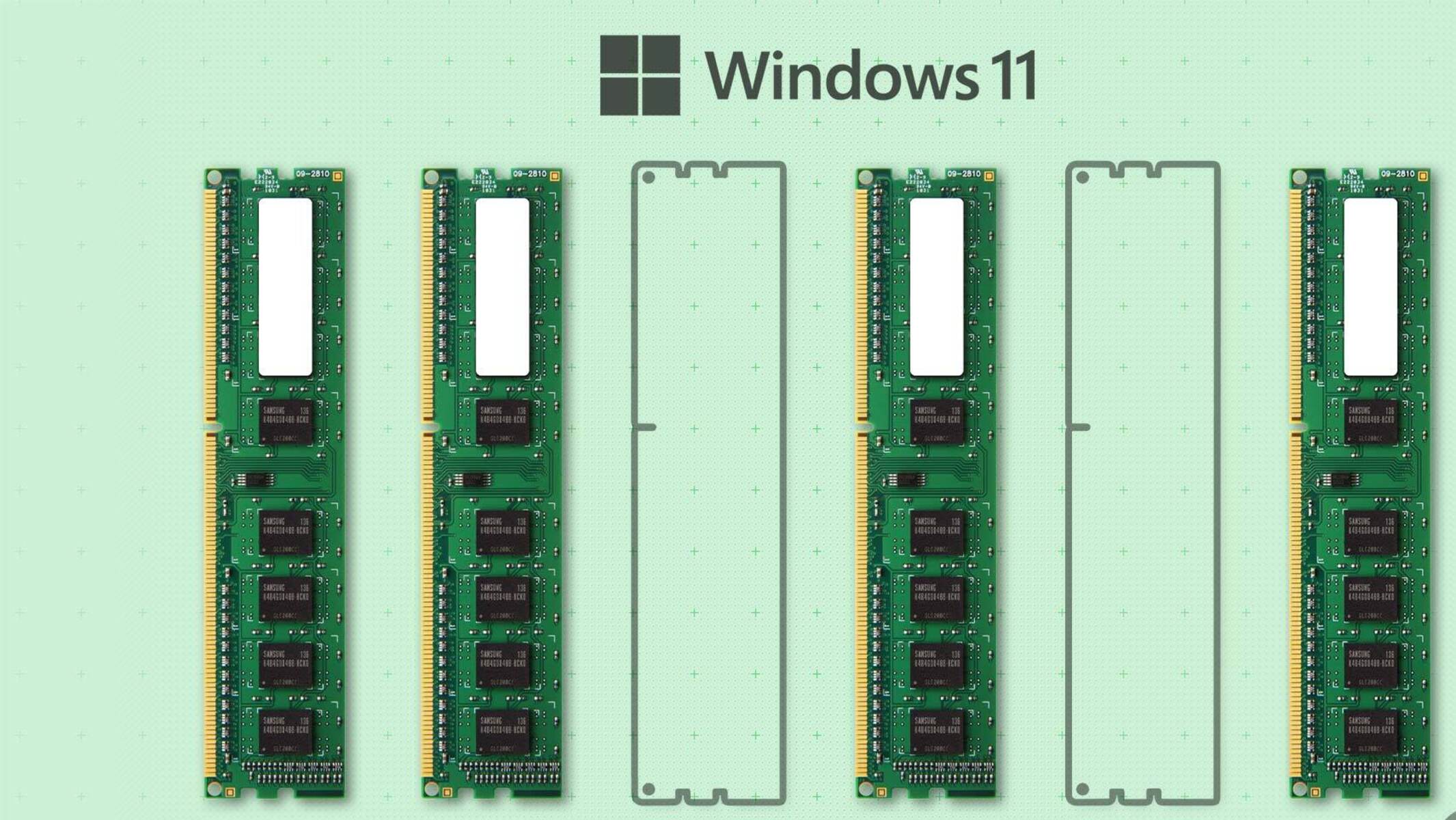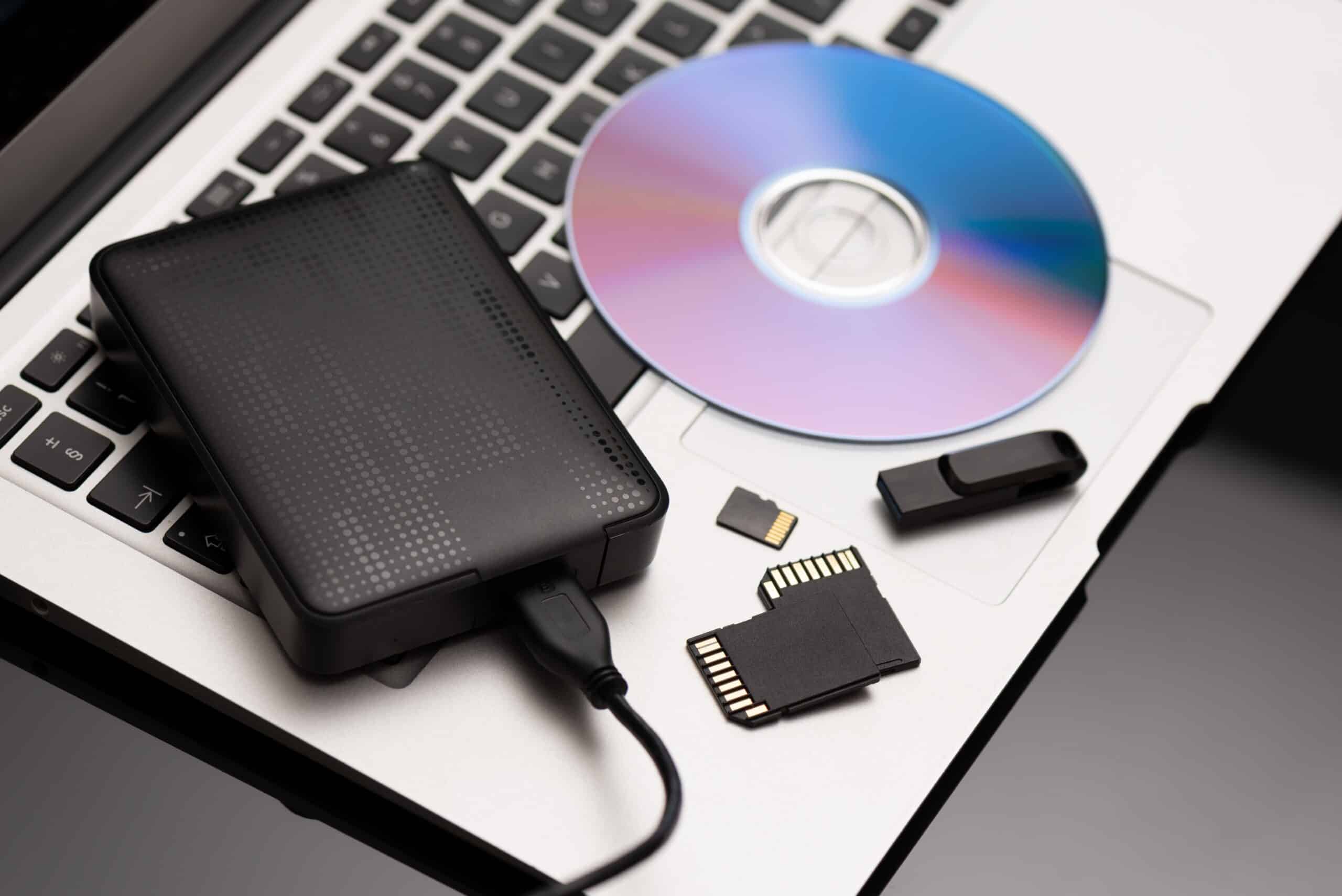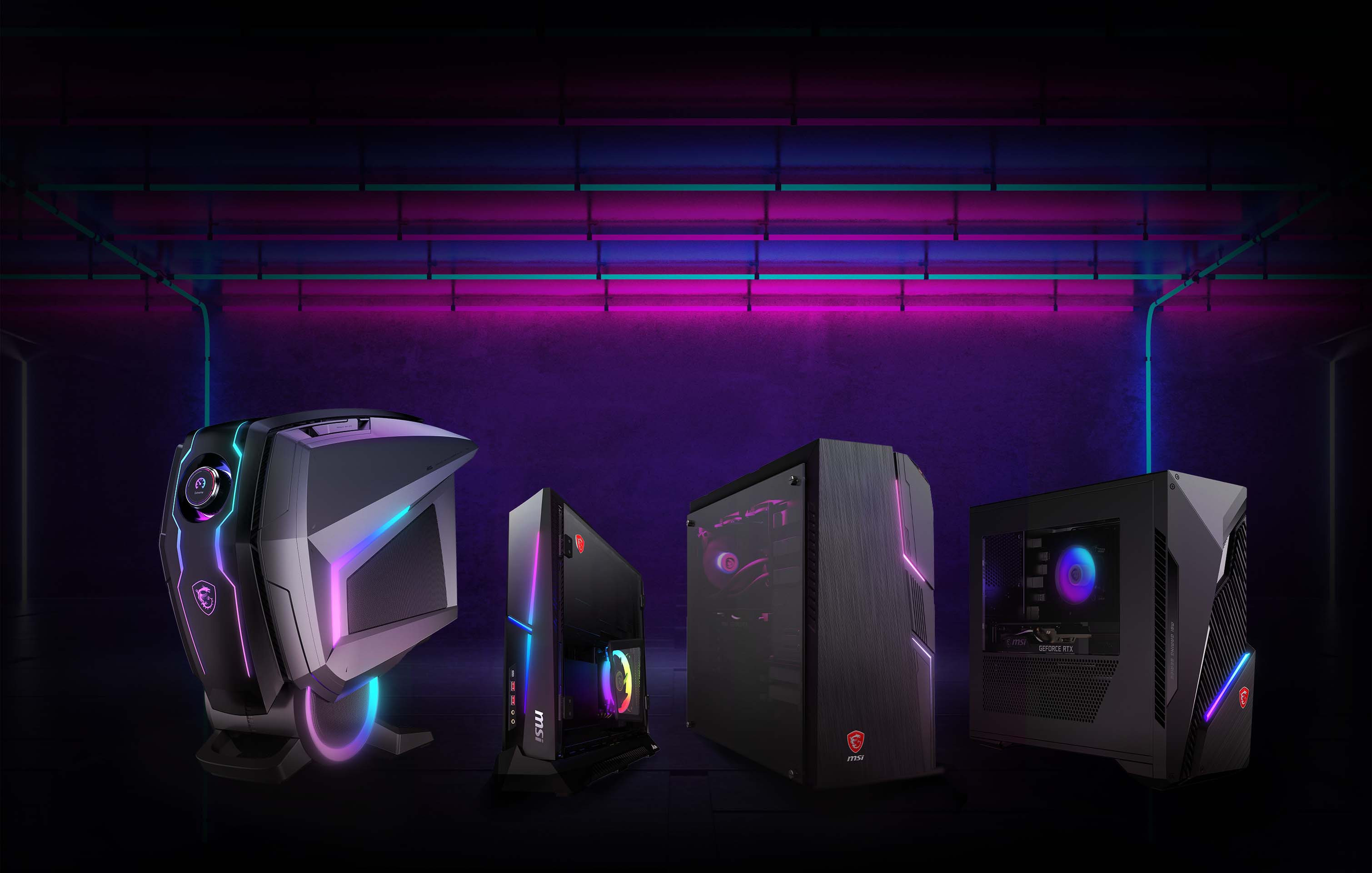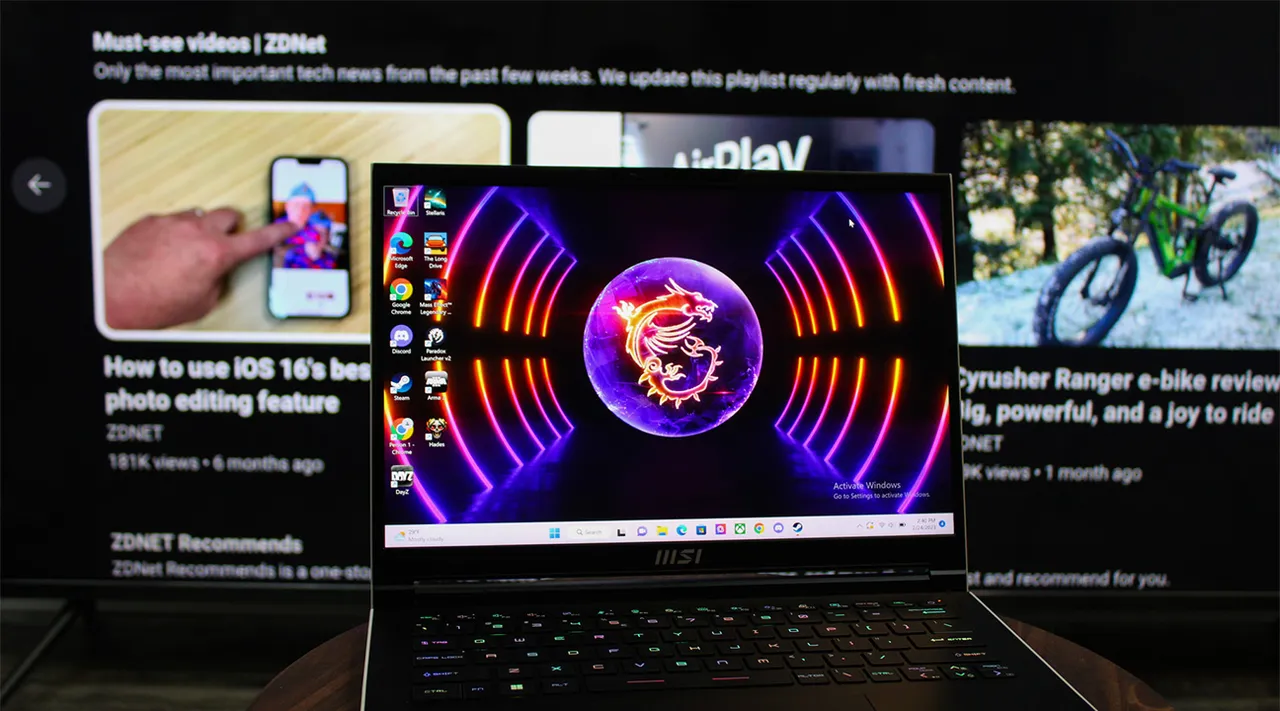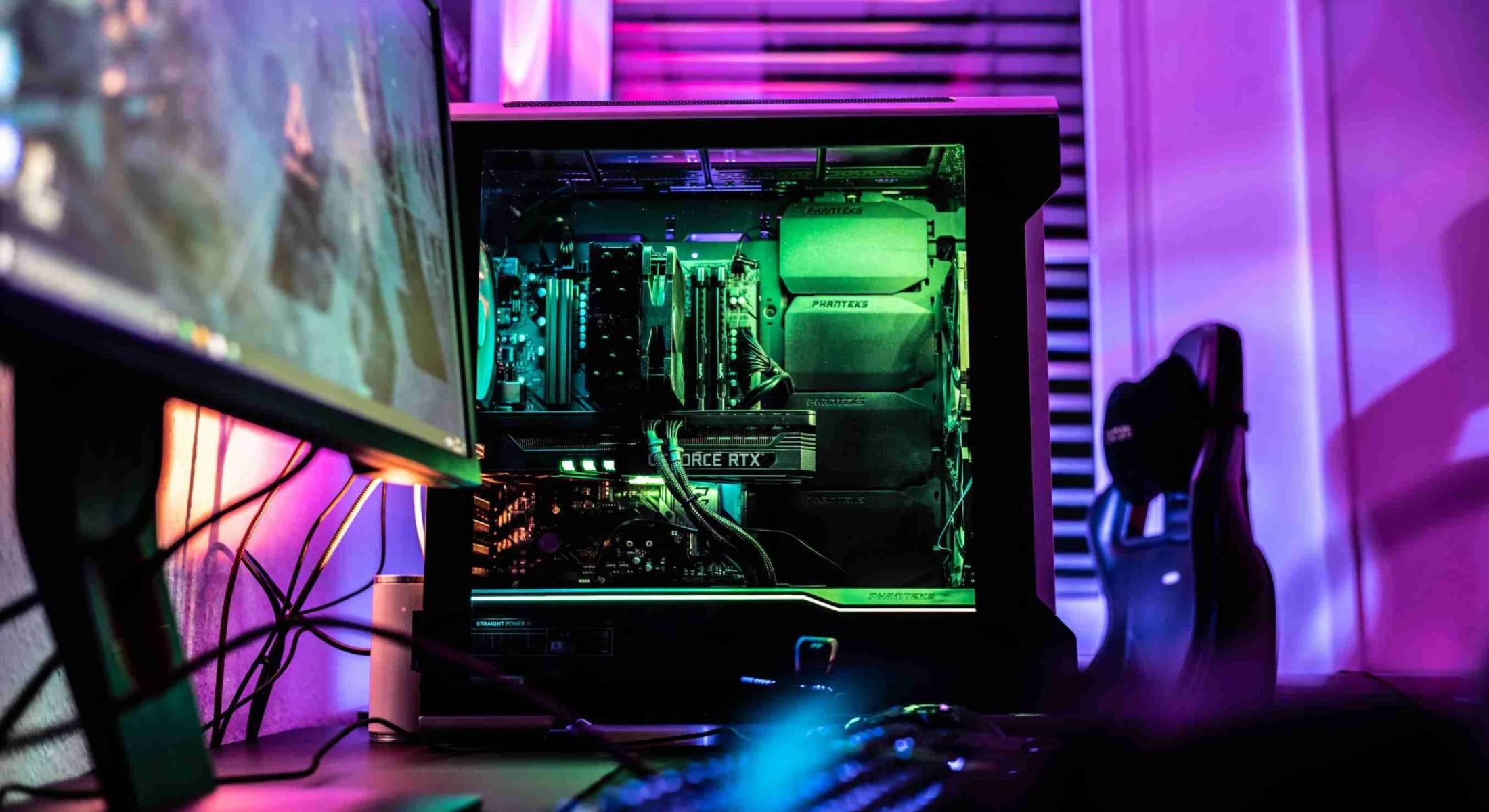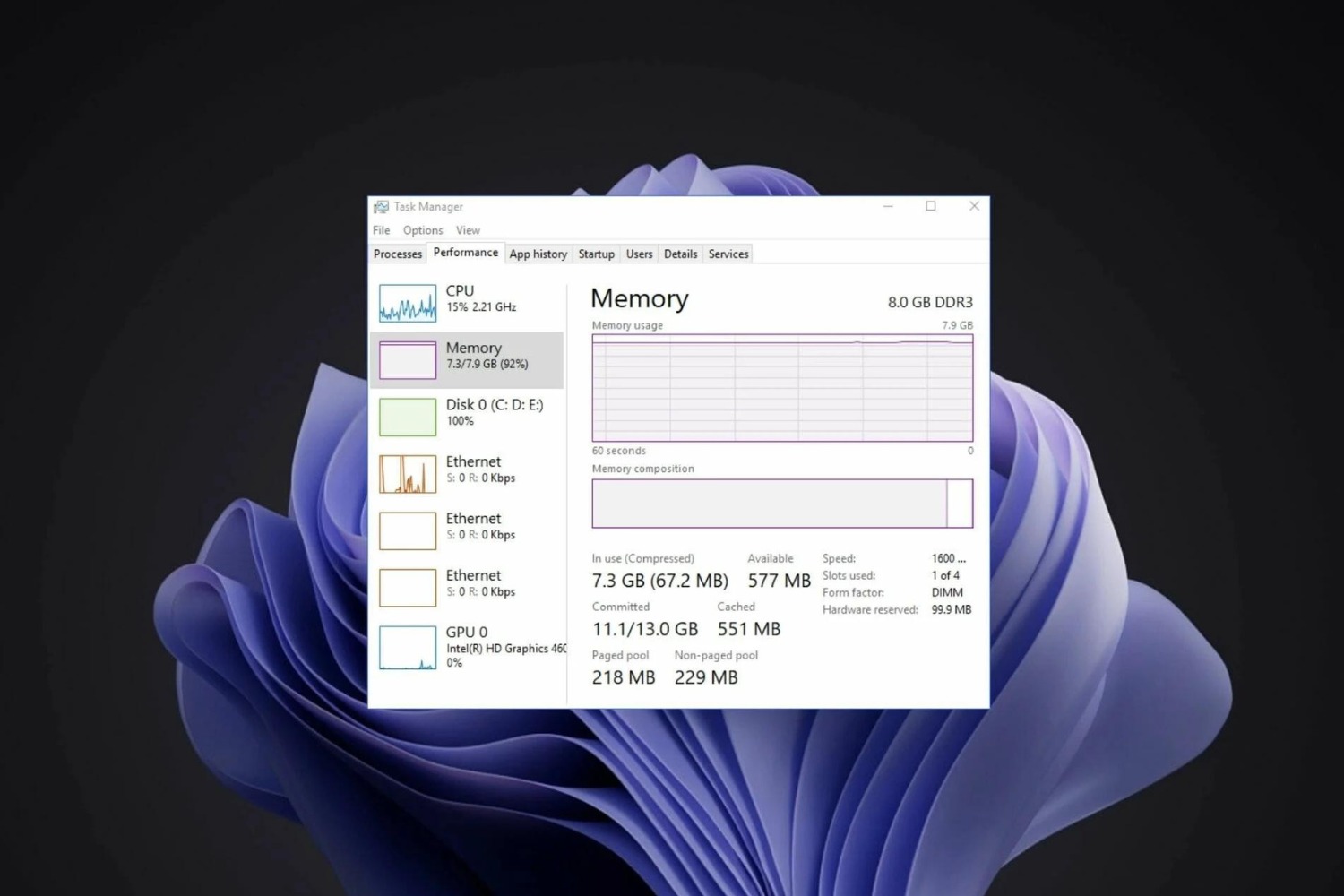Introduction
Windows 11, the latest operating system from Microsoft, has brought exciting new features and a refreshed user interface. As you prepare to upgrade to this cutting-edge OS, one crucial consideration is the amount of RAM your system should have. RAM, or Random Access Memory, plays a vital role in determining your computer’s performance and its ability to handle multiple tasks simultaneously. Understanding how much RAM you need for Windows 11 is essential for ensuring a smooth and seamless computing experience.
Windows 11 is designed to be more resource-intensive than its predecessors, offering enhanced performance and improved security. While the exact RAM requirements can vary depending on individual use cases, it’s important to be aware of the minimum and recommended RAM specifications set by Microsoft. These specifications provide a baseline for system performance and can guide your decision on how much RAM to allocate for your Windows 11 installation.
By ensuring your system has sufficient RAM, you can experience the full range of features and capabilities that Windows 11 has to offer. In this article, we will explore the minimum RAM requirements for Windows 11, the recommended amount of RAM, factors that can impact RAM needs, and considerations for upgrading your RAM to meet the demands of this new operating system.
Minimum RAM Requirements for Windows 11
To ensure that Windows 11 operates smoothly on your computer, it is essential to meet the minimum RAM requirements set by Microsoft. While these requirements serve as a guideline, having more RAM than the minimum can provide better performance and improve multitasking capabilities.
According to Microsoft, the minimum RAM requirement for Windows 11 is 4 GB. This means that your computer should have at least 4 GB of RAM to run the operating system. However, it is important to note that this minimum requirement is solely for the operating system itself and does not account for the additional RAM needed to run other applications or perform resource-intensive tasks.
While 4 GB of RAM is the minimum specification, it is advisable to have a higher amount of RAM to ensure a smoother experience. With modern applications becoming more resource-intensive, a higher RAM capacity can prevent performance issues and improve overall system responsiveness. For example, if you frequently use productivity tools, web browsers with multiple tabs, or resource-demanding software, having more than the minimum RAM requirement can greatly enhance your productivity and overall user experience.
Furthermore, having additional RAM can also provide headroom for future software updates and increased demands from newer applications. As technology advances, software requirements typically increase, and having extra RAM can help future-proof your system and extend its useful lifespan.
It’s important to keep in mind that the minimum RAM requirement is just a starting point, and the overall RAM needs of your system depend on your usage patterns and the specific tasks you perform. If you frequently work with large files, engage in video editing, or run virtual machines, you will likely benefit from having more RAM to accommodate these resource-intensive activities.
Recommended RAM for Windows 11
While the minimum RAM requirement for Windows 11 is 4 GB, it’s recommended to have a higher amount of RAM for optimal performance and a smoother computing experience. Microsoft suggests a minimum of 8 GB of RAM for most users, but depending on your specific needs and usage patterns, you may benefit from even more.
With 8 GB of RAM, you can comfortably run Windows 11 along with several applications without experiencing significant slowdowns or performance bottlenecks. This amount of RAM provides a good balance between cost and performance for the average user who engages in general web browsing, word processing, multimedia consumption, and light multitasking.
However, if you frequently engage in more resource-intensive tasks such as video editing, 3D rendering, gaming, or running virtual machines, it is recommended to have at least 16 GB or more of RAM. These activities require more memory to ensure smooth performance, especially when running multiple demanding applications simultaneously.
Having a higher amount of RAM allows for seamless multitasking, as it provides more headroom to accommodate the memory requirements of various applications. It reduces the chances of experiencing system slowdowns or having to close programs to free up memory.
Moreover, with the growing adoption of cloud-based services and the increasing reliance on web applications, having more RAM can significantly improve your browsing experience. It allows for smoother loading of websites and the ability to keep multiple browser tabs open without impacting overall system performance.
Additionally, if you are a power user or professional who frequently works with large datasets, performs complex simulations, or utilizes resource-intensive software, you may benefit from having 32 GB or even higher amounts of RAM. These higher capacities can provide the necessary resources to handle these demanding tasks efficiently.
In sum, while the minimum RAM requirement for Windows 11 is 4 GB, it is recommended to have at least 8 GB or more, depending on your usage patterns and specific needs. Having an adequate amount of RAM ensures smooth performance, minimizes system slowdowns, and allows for seamless multitasking, providing an enhanced computing experience.
Factors that Determine RAM Requirements
The amount of RAM required for Windows 11 can vary from system to system based on several factors. Understanding these factors can help you determine the optimal amount of RAM needed for your specific needs and usage patterns.
1. Multitasking: If you frequently run multiple applications simultaneously, such as having multiple browser tabs open, working with complex spreadsheets, or running resource-intensive software, you will require more RAM to ensure smooth performance and prevent system slowdowns.
2. Operating System Requirements: While Windows 11 has minimum and recommended RAM requirements, it is important to consider other factors such as the version of the operating system and any future updates. As new features and functionalities are introduced, they may require additional RAM, so having more than the minimum requirement can help future-proof your system.
3. Software and Application Usage: The types of applications and software you use on a regular basis play a key role in determining RAM requirements. Resource-intensive software such as video editing tools, 3D rendering software, and virtualization software tend to utilize a significant amount of RAM. If you engage in activities that require these types of applications, it is advisable to have higher RAM capacity to ensure smooth performance.
4. File Sizes and Data Processing: Working with large files, such as high-resolution images or videos, can benefit from having more RAM. When processing and manipulating large files, more RAM allows for quicker data access and better performance, reducing the risk of system slowdowns.
5. Gaming: Gamers often require more RAM to provide a smooth and immersive gaming experience. Modern games are becoming increasingly demanding in terms of system resources, and having more RAM can help prevent lag, stutters, and other performance issues.
6. Future-Proofing: If you plan to keep your system for an extended period, it is wise to consider future software updates and advancements. As technology evolves, new applications and software may have higher memory requirements. Having more RAM than the current minimum specifications can help ensure your system remains capable of handling future demands.
By taking these factors into account, you can determine the appropriate amount of RAM needed for your specific requirements. While the minimum and recommended RAM specifications provide a general guideline, it is essential to consider your specific usage patterns and potential future needs to make an informed decision.
Multitasking and RAM Needs
Multitasking refers to the ability to run multiple applications and perform various tasks simultaneously on your computer. The amount of RAM you have plays a crucial role in determining how smoothly you can multitask and the overall performance of your system.
When you have limited RAM, running multiple applications can lead to performance issues like slowdowns, freezing, and even crashes. This happens because the operating system and applications need to store data in RAM for quick access. When there isn’t enough RAM to accommodate all the data, the system starts using a portion of the hard drive called the virtual memory, which is significantly slower compared to RAM. As a result, the system’s performance can be negatively impacted.
Having sufficient RAM allows you to multitask without experiencing significant performance degradation. Each application can have its data stored in RAM, ensuring that they can quickly access the necessary information and perform tasks efficiently. This means you can have multiple applications open, switch between them seamlessly, and perform resource-intensive tasks without worrying about system slowdowns.
Moreover, RAM plays a crucial role in web browsing. Modern web browsers can consume a significant amount of RAM, especially when multiple tabs are open. If you’re a heavy browser user who regularly keeps multiple tabs open or engages in activities like streaming high-definition video or using web-based applications, having more RAM can greatly enhance your browsing experience. It allows for smoother and faster loading of web pages and ensures that your browser remains responsive even with multiple tabs open.
In addition to running multiple applications, RAM is also essential for background processes and system functions to run smoothly. The operating system itself requires a certain amount of RAM to perform tasks such as managing files, handling system notifications, and running various background services. Insufficient RAM can impact the system’s ability to handle these tasks efficiently, causing system slowdowns and affecting overall usability.
The more RAM you have, the better equipped your system will be to handle multitasking and resource-intensive activities. If you frequently find yourself running multiple applications simultaneously or engaging in activities that require a significant amount of system resources, such as video editing, gaming, or running virtual machines, it is advisable to have more RAM to ensure smooth performance and a responsive computing experience.
By understanding the relationship between multitasking and RAM needs, you can make an informed decision about the amount of RAM to allocate for your Windows 11 system. Having sufficient RAM will enable you to multitask seamlessly, run resource-intensive applications, and enjoy a fluid computing experience.
RAM Upgrade Considerations for Windows 11
Upgrading your RAM can be an effective way to enhance the performance and overall experience of your Windows 11 system. If you find that your current RAM is inadequate for your needs or you want to future-proof your system, here are a few key considerations to keep in mind when planning a RAM upgrade.
1. Compatibility: Before purchasing new RAM modules, ensure that they are compatible with your computer’s motherboard and meet the specifications required by Windows 11. Check the maximum RAM capacity and supported RAM speeds of your motherboard to ensure compatibility.
2. RAM Type and Speed: Different RAM types, such as DDR3, DDR4, or DDR5, may have varying performance characteristics. Consider choosing RAM modules with higher clock speeds and lower latency for improved performance. However, note that the performance gains from faster RAM may not be noticeable in all use cases, so evaluate your specific needs before investing in higher-speed RAM modules.
3. Capacity: Consider the amount of RAM you need based on your usage patterns and the specific tasks you perform. If you engage in resource-intensive activities like video editing, gaming, or running virtual machines, opt for higher RAM capacities, such as 16 GB, 32 GB, or even higher, to ensure smooth performance and multitasking capabilities.
4. Optimal Configuration: To maximize the benefits of dual-channel or quad-channel memory, consider purchasing RAM modules in pairs or sets that are specifically designed to work together. This can provide a performance boost by allowing data to be transferred simultaneously across multiple modules.
5. Future-Proofing: Keep in mind that as technology advances, software requirements may increase. To future-proof your system, consider getting a higher amount of RAM than you currently need. This can help ensure your system remains capable of handling future demands and software updates.
6. Budget: Consider your budget when planning a RAM upgrade. While higher-capacity and higher-speed RAM modules may offer better performance, they also tend to be more expensive. Evaluate your needs and prioritize your requirements to strike a balance between performance and affordability.
7. Installation: If you’re not comfortable installing RAM modules yourself, consider seeking the assistance of a professional. Improper installation may damage the RAM or other components, so it’s important to follow the manufacturer’s guidelines or consult a professional for assistance.
By considering these factors, you can make an informed decision when upgrading your RAM for Windows 11. A RAM upgrade can significantly enhance system performance, improve multitasking capabilities, and ensure a smoother computing experience for a wide range of tasks and applications.
Conclusion
As you upgrade to Windows 11, understanding the RAM requirements for optimal performance is crucial. While the minimum RAM requirement for Windows 11 is 4 GB, it is recommended to have at least 8 GB or more, depending on your specific needs and usage patterns. Having sufficient RAM ensures smooth performance, minimizes system slowdowns, and allows for seamless multitasking.
Factors such as multitasking, the type of software and applications you use, file sizes, gaming, and future software updates all contribute to determining your RAM needs. By considering these factors, you can determine the appropriate amount of RAM to allocate for your Windows 11 system.
If your current RAM is insufficient or you want to future-proof your system, upgrading your RAM can be a viable solution. Consider compatibility, RAM type and speed, capacity, optimal configuration, future-proofing, and your budget when planning a RAM upgrade.
By ensuring that your computer meets the recommended RAM requirements for Windows 11 and considering an upgrade if necessary, you can experience the full potential of this new operating system. With ample RAM, you can enjoy seamless multitasking, smoother performance, and improved capabilities for resource-intensive tasks.
Remember, RAM is just one component of a well-performing system. Consider optimizing other aspects such as storage, processor, and graphics card to create a balanced and powerful computing environment.
In summary, having sufficient RAM is essential to ensure optimal performance and a smooth computing experience on Windows 11. Understand your needs, evaluate your options, and make an informed decision to allocate the right amount of RAM for your system. With the right amount of RAM, you can unlock the full potential of Windows 11 and enjoy a seamless and responsive computing experience.







